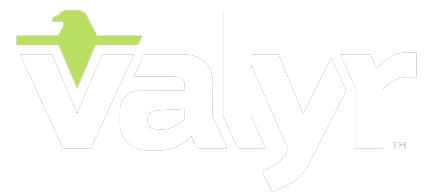Client:
Global Plastics & Chemical Company
Mission:
To solve usability and workflow challenges by revamping the user experience (UX) including user flow strategy and interaction design
Outcome:
-
- Increased user adoption and satisfaction
-
- Reduced task completion time
-
- Improved data accuracy
-
- Reduced operational and support costs
Simplifying Complex Processes Through Enhanced UX
A global plastics and chemical company uses a custom application to help scientists and packaging engineers design and improve complex multilayer films. The application includes close to a dozen predictors, calculators, and resin information. First implemented in 2014, the application has grown as requirements evolved. New modules were developed, and in many cases, features were tacked on without proper integration or user flow strategy. As this approach continued over the course of nine years, the application had become a convoluted and labyrinthine system. Users faced a maze of modules, features, and options that made it increasingly difficult to accomplish their tasks efficiently. With each addition, the complexity grew, leading to a steep learning curve for new users and causing frustration for experienced ones.
The lack of clear integration between modules hindered data transfer and continuity, often resulting in data redundancy and wasted effort. Inefficiencies were rife, and the application had become a source of operational and support costs for the company. It was time for a comprehensive overhaul to simplify the user experience and improve the overall functionality of the application.
The Path to a User-Centric Transformation
Recognizing the pressing need for a UX transformation, the company embarked on a comprehensive initiative to streamline the complex multilayer film design process and provide users with an intuitive, efficient, and cohesive environment. This initiative comprised several crucial steps and phases, each meticulously planned to address the pain points and challenges.
The project began with the Valyr team conducting initial research by immersing themselves in the client’s history, experience, existing technology, and internal feedback. Our first objective was to simplify the user flow, making it as easy as possible for users to achieve their objectives in the shortest amount of time possible. From there, we consolidated resources, aiming to enable users to work in a single environment where they could have easy access to all the tools necessary to achieve their tasks.
Next, we established a plan to enhance the navigation, which allowed us to highlight crucial pages and design an intuitive flow, giving users a clear pathway. To support this, we introduced a real-time progress tracking mechanism that would clearly show the user where they were in the process and what they would need to do next. The last part of the initial phase was to implement an onboarding process that provided first-time users with an introduction to the application, so they could understand the purpose and process before getting started.
Armed with a game plan and our initial research, we employed qualitative research methodologies. Collaborating closely with the client, we crafted an interview guide aimed at probing value touchpoints, challenges, and innovative ideas for improvement. These sessions yielded a wealth of insights, combining deep expertise from power users with fresh perspectives from new users. The Valyr team meticulously analyzed the collected insights and shared findings with the client. This data resulted in a comprehensive requirements document that effectively delineated priorities and essential elements for the project.
Crafting the Enhanced User Experience
To lay the foundation for the user-centric transformation, we started by translating the approved requirements into wireframe blueprints for what we referred to as the ‘supermodule’—essentially taking the original maze of modules and consolidating them into a unified, intuitive experience. Serving as a visual tool, the wireframes enabled us to structure basic content and functionality, setting the stage for the subsequent design enhancements. Once the wireframes were approved, we elevated them to high-fidelity mockups. These mockups not only incorporated visual elements such as colors, images, typography, and branding but also mimicked functionality to a certain extent, offering a tangible representation of the future product design and user experience.
In our unwavering commitment to delivering a superior user experience, we conducted user testing to validate our design improvements. Focusing on user satisfaction and efficiency, this phase involved the participation of the project’s original interviewees. We engaged in moderated walk-through sessions where participants interacted with the mockup and performed designated tasks over a 45-minute screenshare. Their actions, feedback, and observations were recorded and carefully analyzed. The resulting recommendations from this user testing were shared with the client to inform the final phase of the project.
Everything the client needed to pick up the project and begin implementation was delivered on time and on budget. Our collaborative stakeholders were tremendously pleased with the results.
“This UX transformation not only reduced errors and operational costs but also significantly improved the data accuracy and users’ overall satisfaction. Valyr’s dedication to understanding our needs, and their commitment to enhancing our experience have made them an invaluable partner in our quest for excellence in application development.”
– Application Development Scientist
Related Articles:
How CMU Created an Efficient & Secure Workflow for Research Collaboration


